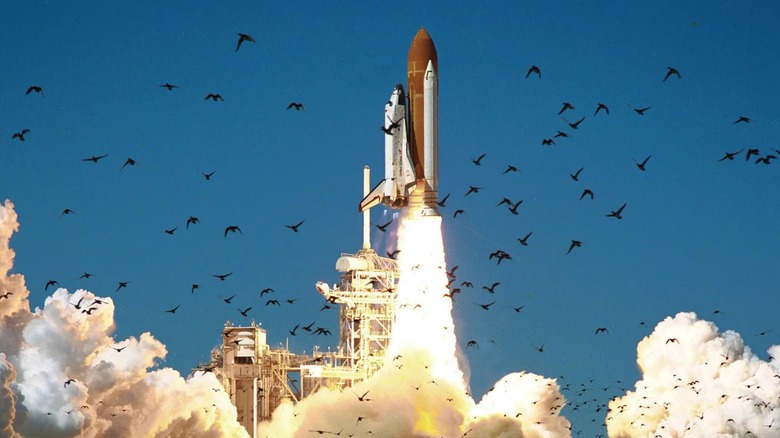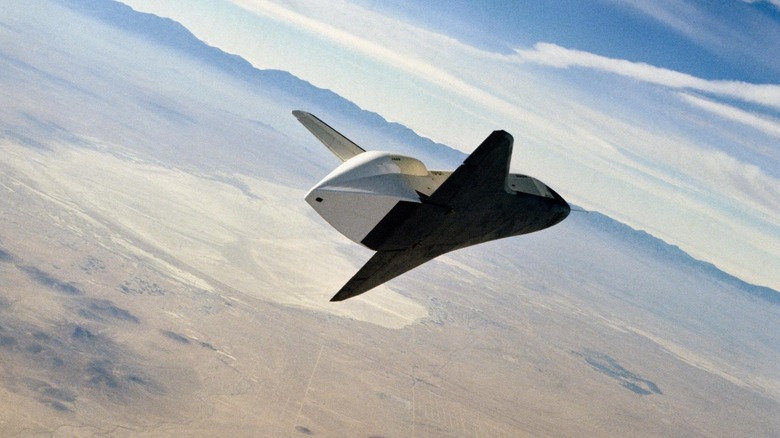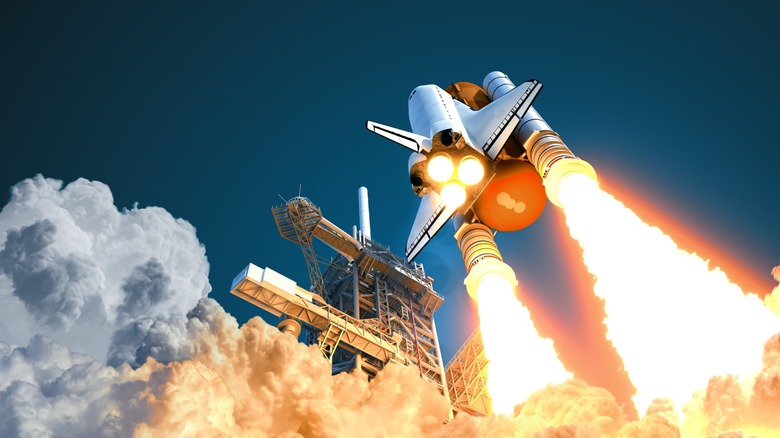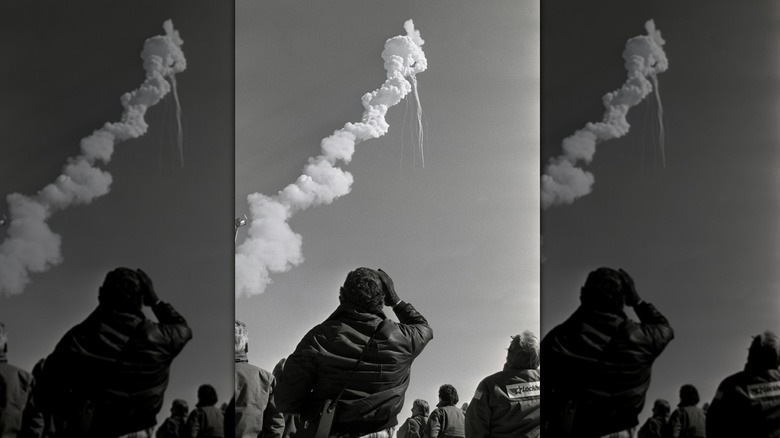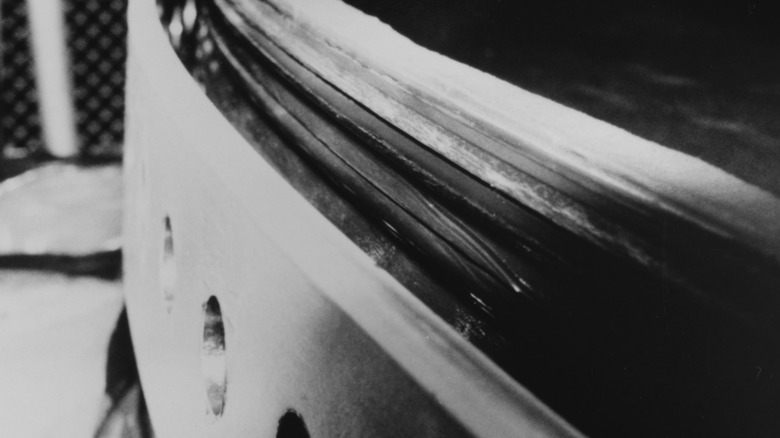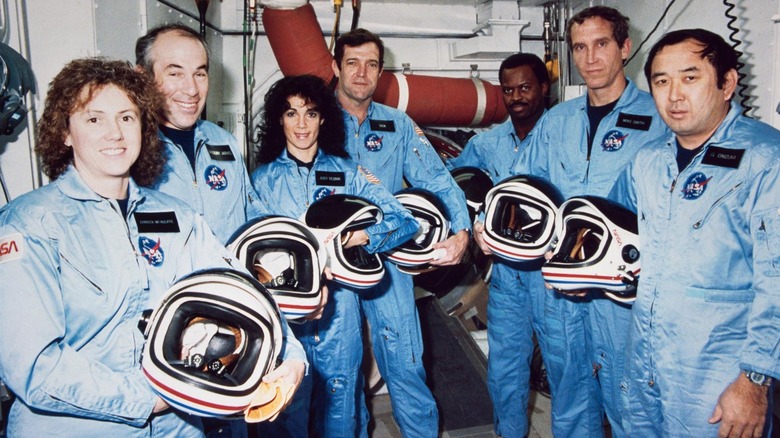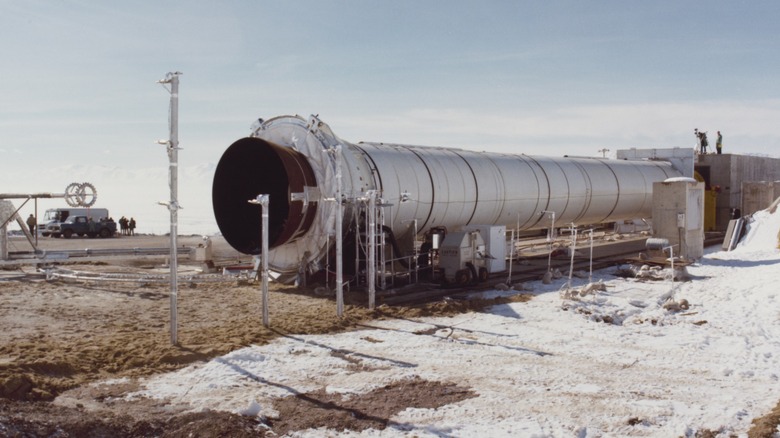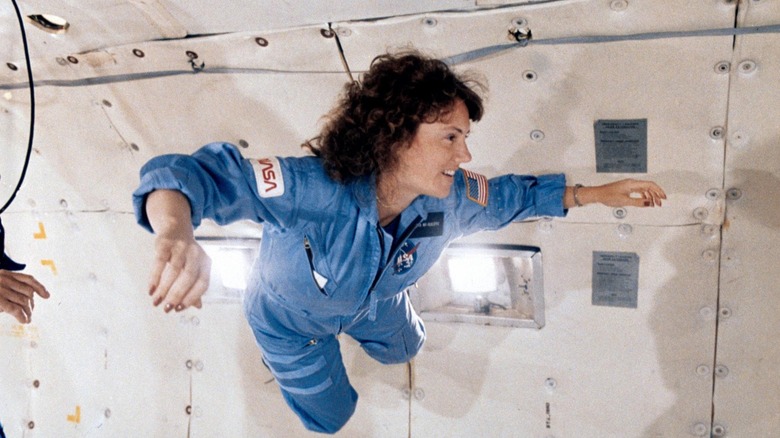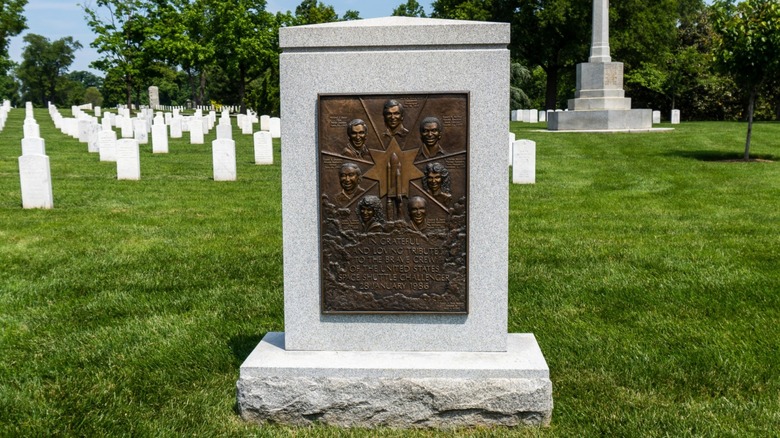The Challenger Disaster: Behind The Fatal Flaw And The Engineering That Fixed It
From its inception, the Space Race held the attention of people of all nations as the world's superpowers flexed their post-war technological muscle in pursuit of science and brinkmanship. As resources from the government poured into the study and eventual exploration of space, space agencies collaborated on projects of grand importance at a cost unimaginable to the average citizen. The assembly of the country's greatest scientific minds led to rockets capable of leaving the atmosphere and the birth of the National Aeronautics and Space Administration, or NASA.
Since NASA was founded in 1958, it's developed and executed a range of space missions initially using single-use rockets such as the Saturn V, Titan, and Atlas V. These successful but ultimately wasteful rockets gave way to a reusable craft that would eventually become known simply as the Space Shuttle, introduced in 1976. It became a beloved American icon, executing 135 missions between 1976 and 2011. The United States' primary adversary, the Soviet Union, created a shuttle of its own called the Buran, but it flew only once as the Soviet system and its budget were crumbling around it, leaving the Space Shuttle as a symbol of American primacy in the space race. However, NASA suffered a huge loss on January 28, 1986 as the Space Shuttle Challenger burst into flames after takeoff, taking the lives of all aboard and sending the nation into shock. Here is an exploration into what went wrong and how it was corrected.
Prelude to a disaster
As the exceedingly successful Apollo mission, which put the first man on the Moon, concluded, proposals for a replacement were discussed at NASA. Budget cuts to the program prevented wide-ranging proposals to go forward, and a concept for a reusable spacecraft rooted in a German design acquired during Operation Paperclip at the end of WWII found favor with the top brass. The project received approval and officially began in 1972.
After several years of development and testing, the first test flights of the Enterprise occurred in 1977, with the first operational flight of a shuttle in 1981. The Enterprise, used only for testing, was joined, in order of introduction, by the Columbia, Challenger, Discovery, Atlantis, and Endeavor. By all metrics, the Shuttle program was another success for NASA, and it served a critical mission enhancing our knowledge of space and the Universe around us.
In August 1984, President Reagan announced the NASA Teacher In Space Program to have a teacher be the first private citizen in space and the impetus for future opportunities to involve more citizens with the space program. A teacher was chosen — New Hampshire social studies teacher Christa McAuliffe — as part of a push to educate Americans about space, including delivering a lesson from the Shuttle while in orbit directly to classrooms across the country. At the start of 1986, the Space Shuttle program had completed 23 successful missions to space, and the second launch of the year was scheduled to have a teacher on board.
Tragedy at Cape Canaveral
At 11:38:00.010 a.m., Eastern Standard Time, the launch sequence for Challenger was initiated, bringing to life the incredibly complex and intricate systems of the Shuttle and its launch vehicle. As the rockets fired and broke loose from the launch pad as planned, all systems reported normal conditions. Communications between the Shuttle and mission command relayed instructions and information ensuring the flight continued as planned, and the launch process initially appeared to be as routine as any of the 23 launches before it. But 72 seconds into the launch, the first indications of a problem appeared on one side of the main fuel tank.
While the mission's TV tracking camera detected a ball of orange fire high on the side of the main fuel tank, close to Challenger's cabin, the crew remained unaware. A series of events rapidly occured following this development. As liquid oxygen pressure began falling, the last comment captured by the crew cabin intercom recorder was Mike J. Smith simply vocalizing, "uh, oh," likely responding to the indicators showing falling pressures and other abnormal readings.
William Harwood of United Press International assembled a timeline of this disaster detailing every step of it from launch to recovery initiating from NASA telemetry and recordings. While reading the timeline can make the event feel long and drawn out, the reality is that within three seconds, the Challenger, which had been traveling at MACH 2, broke up as it was engulfed in flames, falling toward the ocean.
The Rogers Commission
The Reagan administration acted quickly to assemble a commission to investigate what went wrong. Not only was it a high profile disaster, it was broadcast live via satellite and cable TV into the classrooms of 2.5 million American schoolchildren. The tragedy of the Space Shuttle Challenger would change NASA forever, and the administration needed to leave no stone unturned in its investigation.
The commission, named for Chairman William P. Rogers, a former Secretary of State and Attorney General, also included 13 members with various expertise in the space program, science, and engineering, and from other governmental departments. Notable members include Chuck Yeager, the U.S. Air Force pilot who first broke the sound barrier, Sally Ride, the first American woman in space, and Neil Armstrong, the first man to step foot on the moon.
Hearings began a mere nine days after the launch on February 6, 1986. The commission acted fast, interviewing scores of witnesses and experts trying to assess anything that could have contributed to the disaster. Commission member Richard Feynman, a Nobel-winning physicist, stood out in the hearings for being somewhat of a maverick, more concerned with the facts than engendering the machinations of Washington bureaucracy. His tenacity in the face of obfuscation helped to highlight the primary failure. On live TV with a scale model of the Shuttle and a glass of ice water, he boldly demonstrated how cold temperatures could affect a single part on the launch vehicle, an O-ring.
The O-ring
The commission delivered its report to the president on June 6. The report spelled out the failures contributing to the disaster in painstaking detail and made many recommendations for improving processes, safety controls, protocols, and upgrades to the joint involving the Feynman O-ring.
The launch vehicle was built with one large thruster and two boosters, each with its own fuel tank. The solid fuel tanks were assembled in multiple sections with joints between each section sealed using two O-rings and a heat resistant putty on the internal seal. These existed to prevent the escape of particles and heated combustion gasses. Tests had shown that the material used to make these seals would not perform well in cold temperatures.
On the cold morning of the launch, the elasticity and flexibility of the O-rings were diminished. During launch, the cylindrical sections created a small opening as they flexed under the intense launch pressures. The O-rings were expected to shift and flex accordingly, continuing to keep a seal throughout. However, the low temperatures prevented this as the O-rings were too inflexible and let a small amount of gasses through the opening, thus making it increasingly larger. Exacerbating these conditions was the presence of excessive wind shear that morning. As the launch continued, both O-rings were vaporized, no longer holding any of the highly combustible fuel in the tank. The fuel ignited, and a small fire quickly became an all-encompassing fireball, ultimately causing the shuttle to break apart.
Factors contributing to the failure
The Rogers Commission report lays out all the factors it found contributing to the disaster. While the O-ring was a significant piece of it, it was not solely responsible. The commission found that NASA's safety protocols and stringent standards, such as those upheld during the Apollo missions, had been slipping in the preceding years. Furthermore, the decision making process of top administrators was flawed.
The commission made it clear that an O-ring failure only happened because an environment existed that would allow poor decisions to take place. In past launches, combustion gasses had been observed making it past the secondary O-ring. However, because of the cost and time expenditure of redesigning the joint, NASA waived some requirements for the O-rings, meaning administrators chose to accept elevated risk. Since it had not caused a failure to date, NASA assumed it could continue unabated with the current design.
In addition to slipping standards at NASA, a great deal of pressure surrounded STS-51L Mission. Publicity around this launch had risen to a fever pitch. With the first civilian astronaut on board, a live science lesson, foreign competition, future scheduled missions, and the president's desire to include it in speeches all bearing down on administrators, demands to launch on schedule prevailed over absolute safety. With the moon landing well in the past, NASA's popularity waned and organizational burnout began affecting the agency. Highly publicized delays would have further tarnished its public image. Priorities had shifted and focus was lost.
Red flags ignored
Although NASA had witnessed gasses escaping past the O-rings on successful launches and could have used that data as a warning to correct something for future missions, administrators also had a more overt warning. They ignored it.
Roger Boisjoly, a staff engineer with a mechanical engineering degree from UMass Lowell, worked for Morton Thiokol, the NASA aerospace contractor that built the solid rocket boosters for the Shuttle. Far ahead of the launch of STS-51L Mission, Boisjoly began sounding the alarm over potential failure of the O-rings sealing the boosters. In July of 1985, he penned an interoffice memo sent to the vice president of engineering and other top officials at the company warning of problems with O-ring erosion and the danger of accepting the fact that an accident had not yet happened as reason to assume one would not. It specifically includes a warning that continuing operations without evaluating this issue would cause "catastrophe of the highest order — loss of human life."
As the day of launch approached, Boisjoly and his team recommended delaying the launch in favor of warmer weather as they knew the O-ring would not perform well in the cold. NASA rebuffed this recommendation and continued seeking approval for launch. Without the support of its engineering team, Morton Thiokol's top managers signed off on the launch themselves to avoid further delays and raising the ire of one of their largest and most valuable customers. It was a decision they surely came to regret.
How Challenger changed NASA
The impact on the nation and NASA in particular of the Challenger disaster is hard to understate. Not only had it lost some of the most talented minds to ever work for the U.S. government as astronauts, the nation lost a dedicated schoolteacher who represented the best of society. The investigation was swift as were many changes, although some took longer to implement.
By the time the Shuttle program resumed, NASA had invested $2 billion in around 400 improvements — upgrading equipment, enlarging safety personnel, and revamping management with more accountability. The solid rocket boosters received internal metal latches holding sections together, and a third O-ring was added with reconfigured insulation. Furthermore, the seals were electronically heated to keep them at optimum temperature for launches. The Shuttles were also configured with a new escape system for astronauts and other wide-ranging safety improvements.
Perhaps more important and certainly more profound than mechanical improvements to the spacecraft was the change in management at the agency. Managers in place at the time of the Challenger disaster were widely transferred or dismissed while a new management structure was put into place. Contractors received more oversight and contract bids became more widely open to competitors. Finally, the most profound change came from an effort by NASA administrator Richard H. Truly, appointed in 1989, to raise morale, increase cooperation, and eliminate internal divisions, bringing NASA back to its former glory as the world's premier space agency.
Challenger's legacy
Challenger will forever have great significance in the American tale as it was the first loss of life experienced during a NASA mission. It represents a failure of government at a catastrophic level. Furthermore, that it was experienced by NASA exposes an irony as NASA is the agency that once had shown how well a government agency can work and what it can accomplish when it is supported by the people and run with competence and focus.
Today, you can find schools across the country named Challenger or McAuliffe as a tribute to the brave teacher, Christa McAuliffe, who started a flight to space and never made it. Scores of Gen X adults still remember vividly watching the wonder of space exploration literally break up into pieces on live TV. It was a sad day that reminds us that for all we accomplish as humans, no reward comes without risk, and that complacency and a failure to uphold our own standards can lead to catastrophe. It's important to remember this event and hope that it serves to prevent another disaster within the space program, although another would come to pass when the Space Shuttle Columbia broke up on re-entry in 2003.
